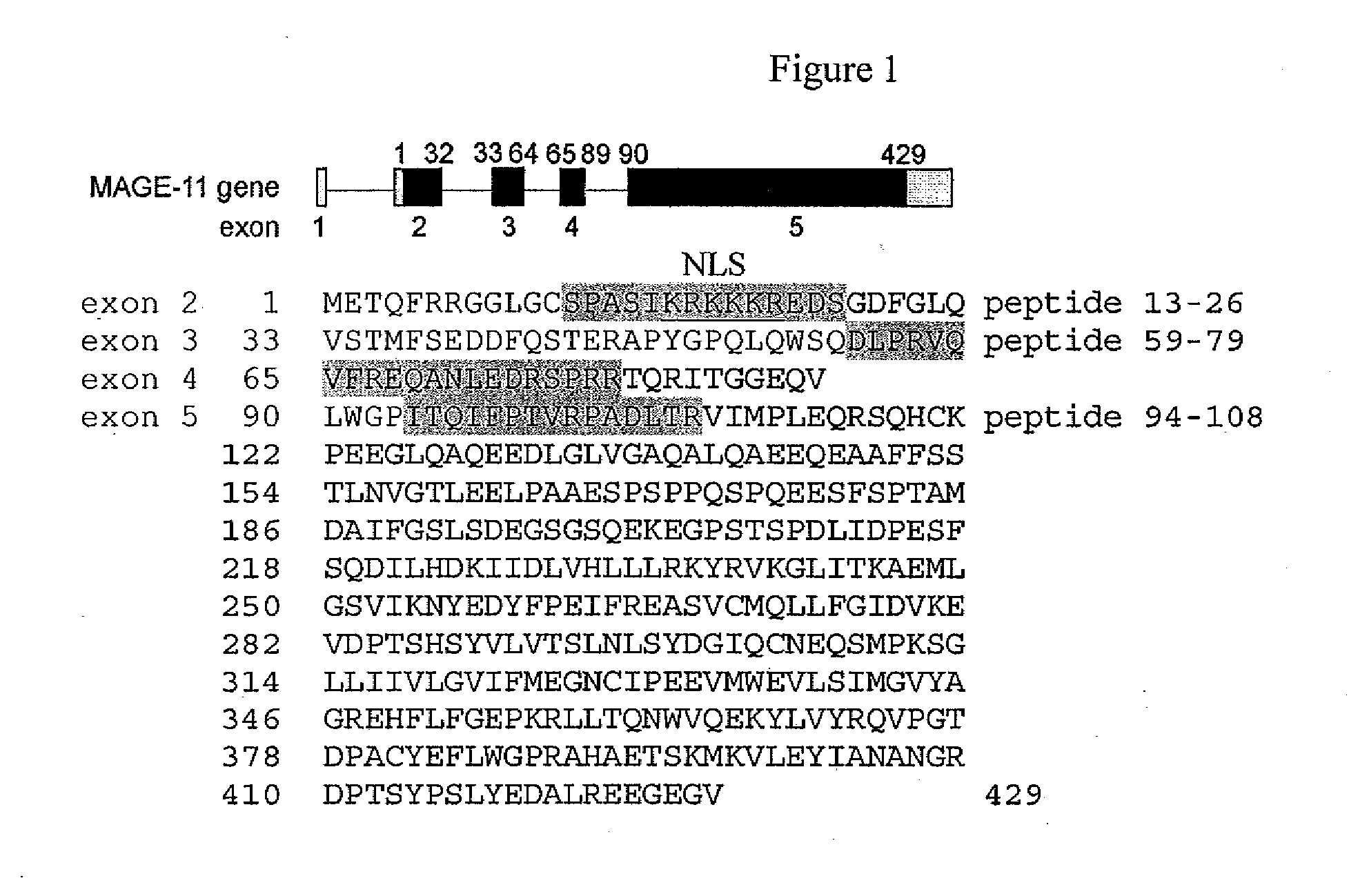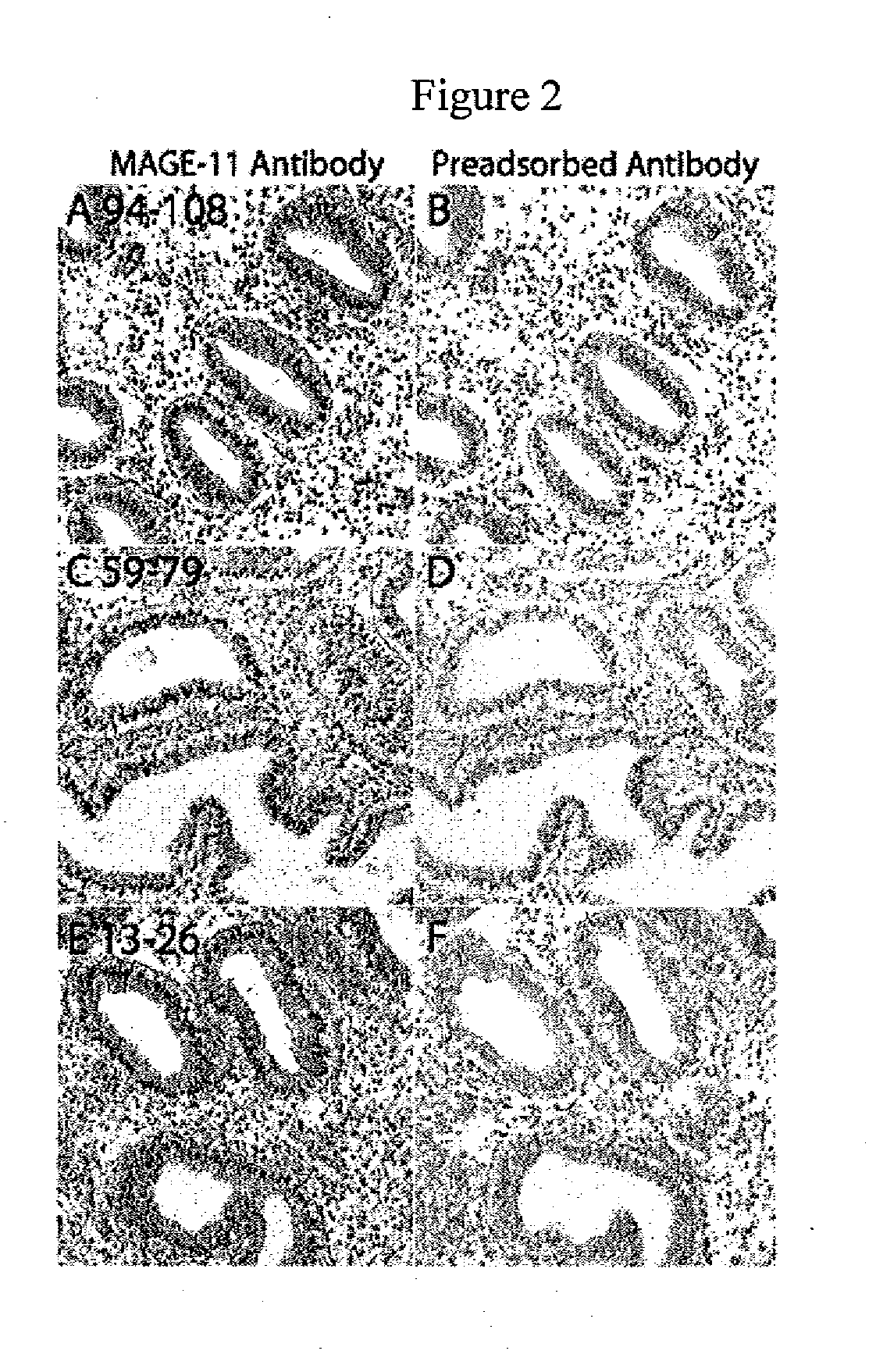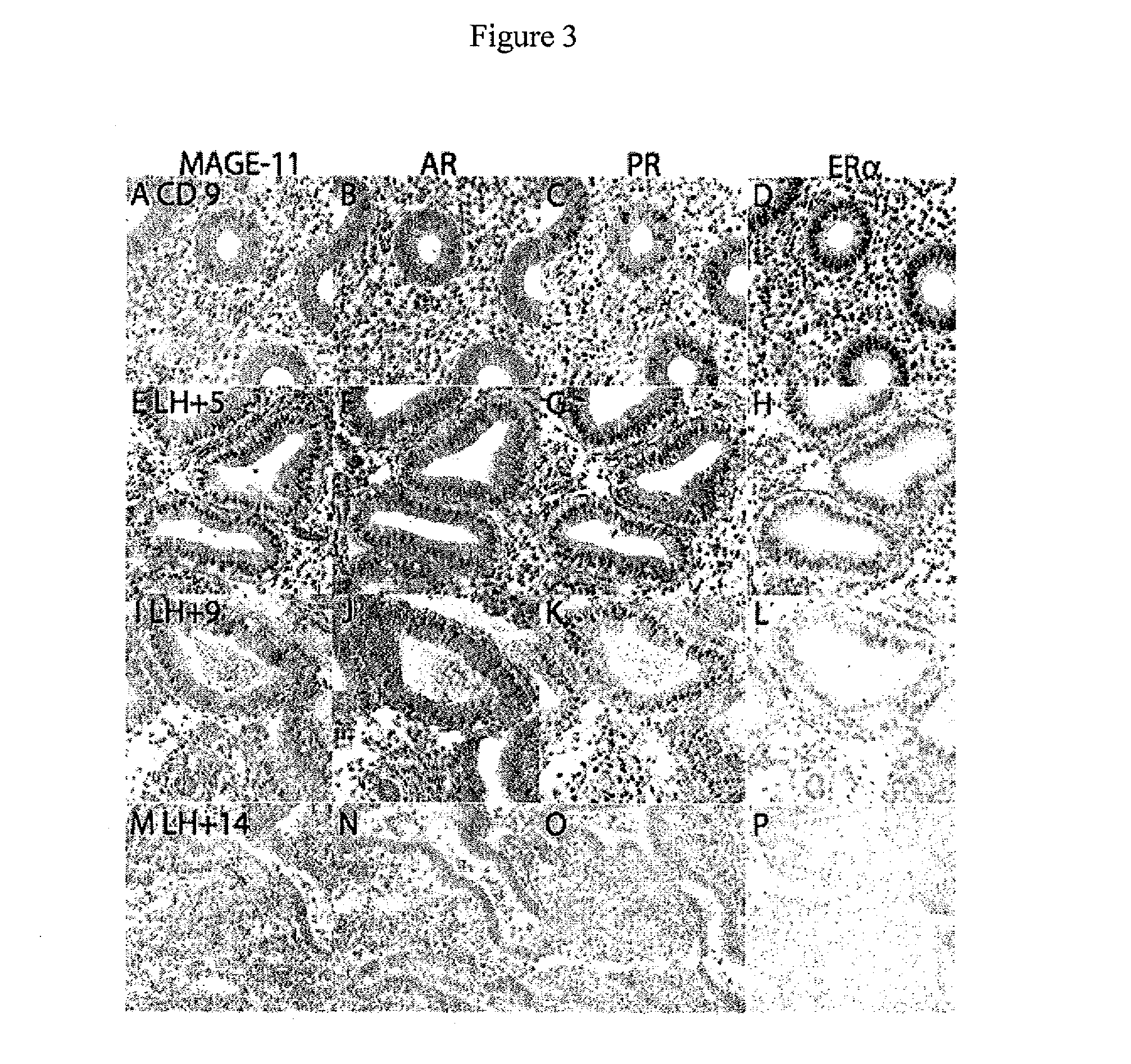Mage-11 as a marker for endometrial receptivity to embryo transplantation and a marker and therapeutic target in castration-recurrent prostate cancer
a technology of endometrial receptivity and embryo transplantation, which is applied in the direction of antibody medical ingredients, peptide/protein ingredients, dna/rna fragmentation, etc., can solve the problems of inability to provide many reliable markers for identification, the number and cost of in vitro fertilization procedures continue to rise, and the efficiency of embryo implantation in assisted reproduction procedures is quite low
- Summary
- Abstract
- Description
- Claims
- Application Information
AI Technical Summary
Benefits of technology
Problems solved by technology
Method used
Image
Examples
example 1
Cycle-Dependent Expression of the Androgen Receptor Coregulator MAGE-11 in Human Endometrium
[0058]The requirement for androgen receptor (AR) mediated gene regulation in male sex development is clearly demonstrated by individuals with the androgen insensitivity syndrome. In this X chromosome linked disorder, 46XY genetic males with single missense mutations in the AR gene are born with ambiguous genitalia or complete female external genitalia. Identical loss-of-function mutations have relatively little phenotypic effect in 46XX carrier females (Quigley et al. (1995) Endocr. Rev. 16:271-321) in part due to the double allele status of the AR gene and to random and partial inactivation of the X chromosome. However, female mice homozygous for AR inactivating mutations have reproductive abnormalities that implicate a role for AR in female fertility (Shiina et al. (2006) Proc. Natl. Acad. Sci. USA 103:224-229). Reduced fertility in homozygous female AR knockout mice is associated with prol...
example 2
MAGE-11 as a Marker and Therapeutic Target for Castration-Recurrent Prostate Cancer
Background
[0091]AR is a ligand dependent transcription factor required for prostate cancer development and progression. AR transcriptional activity is modulated by interactions with coregulatory proteins. The recently discovered AR coregulator MAGE-11 (also referred to as MAGE-A11) was initially identified in a yeast two hybrid screen of a human testis library using an AR NH2-terminal FXXLF motif fragment as bait. Before its identification as an AR coregulator, the function of MAGE-11 was unknown. Expression of MAGE-11 is limited to human and nonhuman primates and is absent in rats or mice. The primary function of MAGE-11 is to increase AR transcriptional activity.
[0092]As described above, MAGE-11 binds the AR NH2-terminal FXXLF motif to increase AR transcriptional activity by exposing activation function 2 (AF2) for increased binding of the SRC / p160 coactivators LXXLL motifs (FIG. 12A). Coexpression ...
PUM
| Property | Measurement | Unit |
|---|---|---|
| time | aaaaa | aaaaa |
| molecular weight | aaaaa | aaaaa |
| pH | aaaaa | aaaaa |
Abstract
Description
Claims
Application Information
 Login to View More
Login to View More - R&D
- Intellectual Property
- Life Sciences
- Materials
- Tech Scout
- Unparalleled Data Quality
- Higher Quality Content
- 60% Fewer Hallucinations
Browse by: Latest US Patents, China's latest patents, Technical Efficacy Thesaurus, Application Domain, Technology Topic, Popular Technical Reports.
© 2025 PatSnap. All rights reserved.Legal|Privacy policy|Modern Slavery Act Transparency Statement|Sitemap|About US| Contact US: help@patsnap.com



